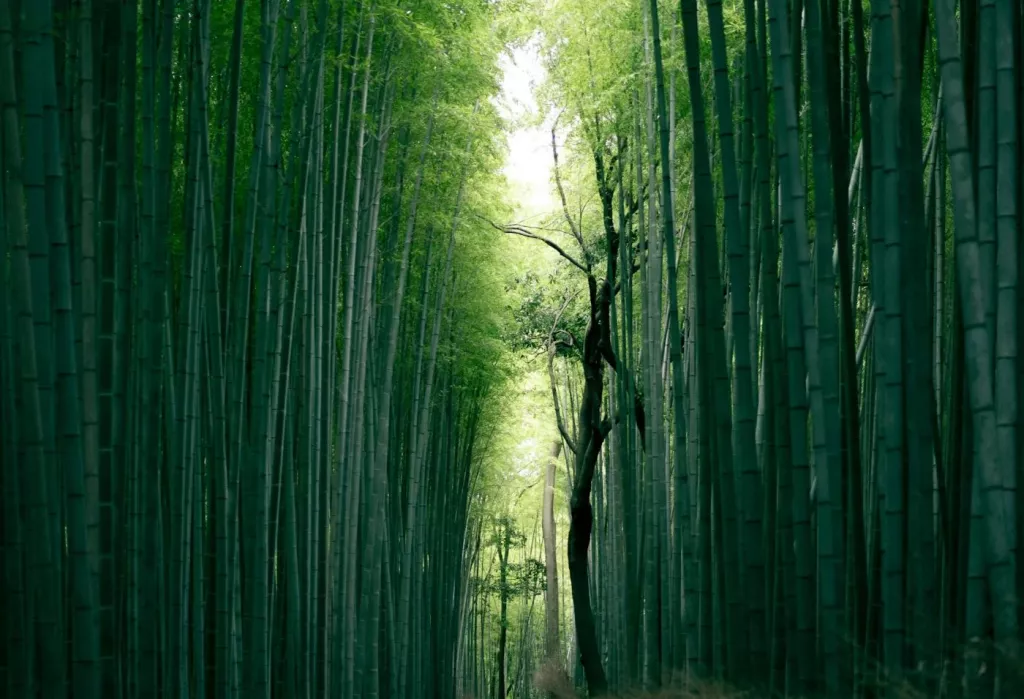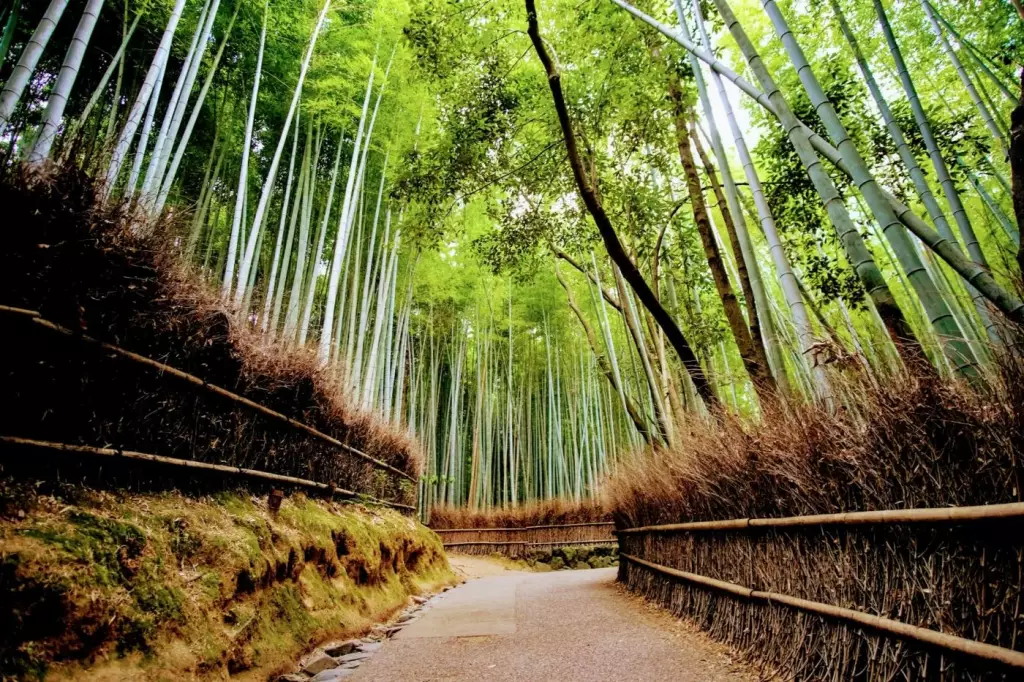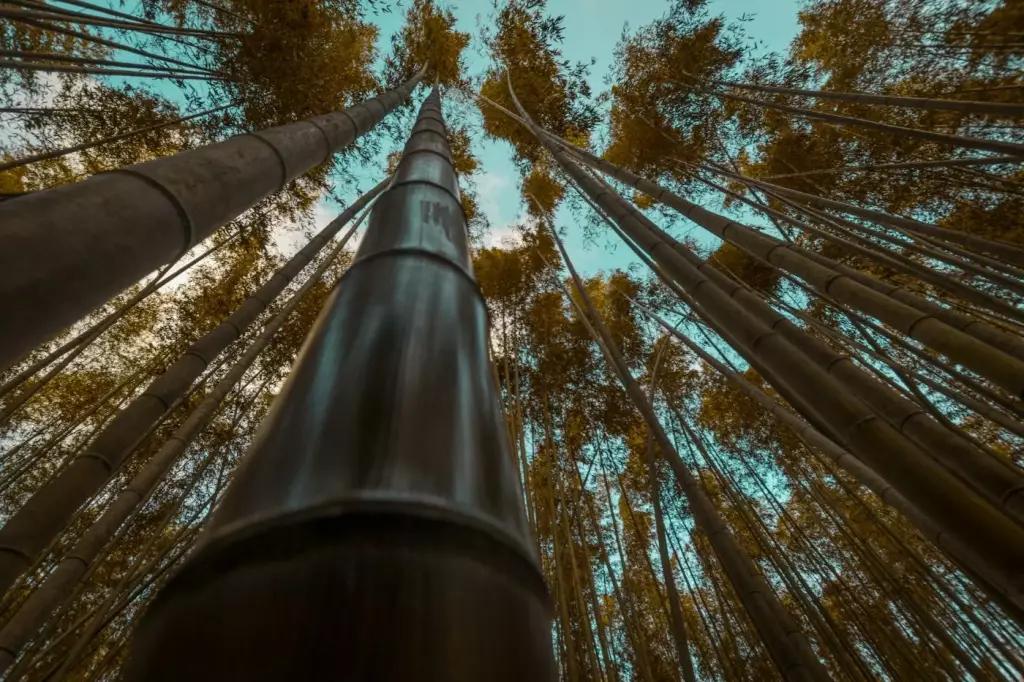Top 11 Largest Producers of Bamboo
Globally, the bamboo industry is experiencing rapid growth, with an estimated cultivation area exceeding 35 million hectares as of the latest data. This surge is driven by bamboo's versatility, being used in everything from construction materials to textiles, and its reputation as a sustainable alternative to traditional wood. In this article, we will reveal the top 11 largest producers of bamboo and their significant contribution to bamboo cultivation worldwide.
The top bamboo producers globally include China, India, Myanmar, Thailand, Philippines, Bangladesh, Japan, Vietnam, Indonesia, Brazil, and Nigeria. These countries have vast areas of bamboo forests and significantly contribute to the global bamboo market, leveraging bamboo for construction, paper, and textiles.
China and India are the largest producers of bamboo worldwide. In China, bamboo is a revolutionary building block for everything, while in India, bamboo goes beyond construction, becoming the heart of handcrafted textiles and everyday items. Let's further explore how bamboo's applications are expanding beyond construction and textiles in these countries.
Summary
- China is the world's largest bamboo producer, largely due to its vast land area and diverse climates suitable for a wide range of bamboo species, supported by government initiatives.
- India, the second-largest producer, emphasizes the economic and cultural significance of bamboo, with government initiatives like the National Bamboo Mission aimed at enhancing the sector's growth.
- Bamboo's ecological benefits, including soil conservation and carbon sequestration, highlight its role in environmental conservation, as seen in countries like China and Myanmar.
- The cultivation and utilization of bamboo are deeply integrated into the cultural practices of many countries, such as Japan, the Philippines, and Thailand, underscoring its importance beyond mere agricultural production.

On this page:
- Leading Producers of Bamboo Worldwide
- China Is The Top Producer of Bamboo
- India Is The Second Largest Producer of Bamboo
- Myanmar Showcases Extensive Bamboo Forests
- Thailand Supports a Variety of Bamboo Species
- The Philippines Is a Significant Producer and User of Bamboo
- Bangladesh is Recognized as One of the Top Producers of Bamboo
- Japan is a Prominent Country In Terms of Bamboo Cultivation
- Vietnam Is Another Successful Top Producer of Bamboo
- Indonesia's Success In The Bamboo Industry
- Brazil's Engagement With Bamboo Cultivation
- Nigeria's Growing Interest in Bamboo Cultivation and Utilization
- Bamboo Supply and Demand Dynamics Worldwide
- Bamboo Trade and Export Patterns
- Potential for Expansion in Non-Traditional Regions
Leading Producers of Bamboo Worldwide
| Country | Estimated Bamboo Production (in metric tons) | Note |
|---|---|---|
| China | 30 million | Largest producer, diverse species |
| India | 20 million | Wide cultivation, significant in rural economy |
| Myanmar | 5 million | Natural forests, traditional use |
| Thailand | 4 million | Plantations and natural forests |
| Philippines | 3.5 million | Varied species, integral to culture |
| Bangladesh | 3 million | Abundant in the northeast, used in construction |
| Japan | 2.5 million | Culturally significant, diverse applications |
| Vietnam | 7 million | Extensive plantations, export-oriented |
| Indonesia | 9 million | Archipelago with ideal growing conditions |
| Brazil | 6 million | Expanding cultivation, environmental interest |
| Nigeria | 1.5 million | Emerging industry, favorable climate |
China Is The Top Producer of Bamboo
China has vast land and diverse climates
China's status as the world's largest bamboo producer is largely due to its extensive land area, encompassing a wide range of climates from tropical to temperate zones, which are ideal for bamboo growth.

China has the most bamboo forests
China is recognized as the country with the most extensive bamboo forests in the world. The significance of bamboo in China extends beyond its abundance.
Its fast growth rate and sustainability make it an eco-friendly alternative to wood and other materials, fitting well with global efforts towards more sustainable practices.
Ecologically, bamboo forests are crucial for environmental conservation. They help in soil conservation, carbon sequestration, and biodiversity preservation.
Bamboo roots reduce soil erosion, while the plants themselves can absorb significant amounts of carbon dioxide, making them important in the fight against climate change.
Moso bamboo dominates in China
The country is particularly famous for its moso bamboo, a species that is highly valued and widely cultivated, contributing significantly to its dominance in the global bamboo market.
In 2018, China's bamboo industry was valued at approximately USD 39 billion, indicating a highly productive sector that supplies a broad spectrum of bamboo products to the international market.
China is home to several bamboo species
China is home to over 400 species of bamboo, thriving in diverse environments from coastal areas to high mountain regions, which facilitates widespread cultivation across the country.
China's government support
The Chinese government actively supports the development of the bamboo industry through policies and initiatives that encourage research, innovation, and sustainable practices, further enhancing its production capacity.
India Is The Second Largest Producer of Bamboo
Biodiversity and distribution of bamboo in India
India is home to more than 136 species of bamboo, distributed across various states but predominantly found in the Northeastern region, including states like Assam, Nagaland, Mizoram, and Tripura.
These areas host vast bamboo forests that contribute substantially to the local economy and ecosystem.
Bamboo's economic and cultural significance in India
Bamboo is more than just a plant in India; it is an essential part of the rural economy and cultural practices. It is used in various applications, from construction, paper, and textile production to handicrafts and furniture.
Bamboo also plays a vital role in traditional rituals and daily life in many Indian communities.
India's government initiatives towards bamboo cultivation
Recognizing the potential of bamboo, the Indian government has undertaken several initiatives to promote its growth and utilization.
For example, the National Bamboo Mission (NBM) was launched to enhance the growth of the bamboo sector by increasing the area under bamboo cultivation and promoting the marketing of bamboo products.
The mission aims to empower rural communities, especially in the Northeast, by creating employment opportunities and promoting sustainable development.
Myanmar Showcases Extensive Bamboo Forests
The forests and climate conditions in Myanmar
Myanmar is home to approximately 1.5 million hectares of bamboo forests, showcasing the country's rich natural resources.
The nation's climate is marked by a monsoon season, which offers optimal conditions for bamboo cultivation and growth.
The country is home to diverse bamboo species
Although the exact number of species isn't specified, the vast bamboo forests suggest a significant diversity of bamboo species thriving in Myanmar's varied ecosystems.
Bamboo is engrained in the culture and economy of Myanmar
Bamboo plays a crucial role in the livelihoods of local communities, contributing to both traditional uses and the potential for economic development through sustainable management and utilization.
Thailand Supports a Variety of Bamboo Species
Geographical and climatic conditions of Thailand
Thailand is located in Southeast Asia, a region known for its tropical climate, which is highly conducive to bamboo growth.
The country's varied topography, including its mountains, plains, and river basins, offers a wide range of ecological conditions for different bamboo species.

The warm and humid climate, with abundant rainfall, provides an ideal environment for bamboo, which thrives in such conditions. Thailand experiences a monsoon climate, which ensures that bamboo forests receive sufficient water throughout the year.
Thailand is home to a rich biodiversity
There are more than 1,500 bamboo species worldwide, and Thailand boasts a significant number of these, making it a key area for bamboo diversity.
This diversity allows for the cultivation of a variety of bamboo types, suited for different uses, from construction and handicrafts to paper and textile production.
Bamboo is embedded in the country's tradition
Bamboo has a deep cultural significance in Thailand and is embedded in the country’s traditions and way of life. It has been used for centuries in building homes, furniture, tools, and even in cuisine.
This cultural affinity towards bamboo ensures a sustained interest and knowledge in bamboo cultivation and utilization, passed down through generations.
The Philippines Is a Significant Producer and User of Bamboo
Geographical and climatic advantage
The Philippines is an archipelago comprising over 7,000 islands, offering a wide range of microclimates suitable for different bamboo species. Its tropical maritime climate, characterized by abundant rainfall and relatively high temperatures, provides ideal conditions for bamboo growth.
The country's varied topography, including mountainous areas, lowlands, and coastal zones, allows for the cultivation of a diverse array of bamboo species, adapted to different environmental conditions.
Bamboo biodiversity in the Philippines
The Philippines is home to a significant number of bamboo species, with estimates suggesting over 60 indigenous species. This biodiversity is a critical resource for various uses, from construction and handicrafts to furniture and even food.
The rich genetic diversity of bamboo in the Philippines supports efforts to develop and propagate species with desirable traits, such as strength, flexibility, and fast growth rates.
Bamboo is an integral part of the Philippine culture
Bamboo has been an integral part of Filipino culture and daily life for centuries, utilized in traditional housing, fishing gear, musical instruments, and as a material for various crafts.
The versatility and cultural significance of bamboo ensure its continued use and preservation within communities, promoting traditional knowledge and practices.
Bangladesh is Recognized as One of the Top Producers of Bamboo
Below is a detailed discussion of the factors contributing to Bangladesh's prominence in bamboo production:
Bangladesh has favorable climatic conditions

Bangladesh's tropical monsoon climate is highly conducive to the growth of bamboo. The warm, humid conditions throughout the year allow for rapid growth cycles of bamboo species.
The country receives a substantial amount of rainfall, particularly during the monsoon season, which is beneficial for bamboo cultivation. Bamboo thrives in moist conditions, and the natural rainfall patterns eliminate the need for extensive irrigation.
The country homes diverse bamboo species
Bangladesh is home to a diverse range of bamboo species. Over 40 species of bamboo are found across different parts of the country, including both indigenous and introduced varieties.
The wide range of ecological zones in Bangladesh, from low-lying floodplains to hilly regions, supports the growth of different bamboo species. Each species has adapted to specific environmental conditions, contributing to the overall bamboo production.
Socio-economic importance of bamboo cultivation in Bangladesh
Bamboo holds significant cultural importance in Bangladesh. It is used in traditional architecture, furniture, handicrafts, and even in day-to-day utensils. The high demand within the country itself supports its cultivation and production.
Bamboo cultivation is a vital source of income for many rural communities. It requires less initial investment compared to other cash crops and can be harvested within a few years of planting, offering a quicker return on investment.
The bamboo industry provides employment opportunities in rural areas, not just in cultivation but also in processing and selling bamboo products. This has a positive impact on rural economies.
Bangladesh offers many geographic advantages for bamboo to thrive
The extensive river systems and wetlands in Bangladesh are ideal for bamboo growth. Many bamboo species thrive in riparian zones along riverbanks, where soil moisture is high.
The alluvial soil deposited by rivers is highly fertile, providing essential nutrients for the robust growth of bamboo.
Japan is a Prominent Country In Terms of Bamboo Cultivation
Japan has varied climate zones
Japan spans several climatic zones, from the cold temperate north to the subtropical south. This diversity allows for the cultivation of different bamboo species suited to varying conditions, with the warmer regions particularly conducive to bamboo growth.
Similar to Bangladesh, Japan benefits from seasonal rainfall, which provides ample water for bamboo cultivation. The country's rainy season (tsuyu) ensures that bamboo forests receive the necessary hydration for growth.
Japan practices the conservation of bamboo species
Japan is home to numerous bamboo species, including some that are unique to the region. This diversity is carefully preserved and managed through conservation efforts and traditional practices.
There's also a strong emphasis on conserving and managing bamboo forests sustainably. Traditional knowledge plays a significant role in the maintenance of bamboo forests, ensuring their health and productivity.
Bamboo is integral to Japanese culture
Bamboo is deeply ingrained in Japanese culture, symbolizing strength, flexibility, and purity. It is used in traditional arts, crafts, and construction, including tea ceremony utensils, musical instruments, and even in the construction of temples and houses.
The country is also renowned for its bamboo craftsmanship, combining traditional techniques with modern design to create high-quality bamboo products. This has elevated the status of bamboo from a mere plant to a symbol of Japanese art and aesthetics.
Vietnam Is Another Successful Top Producer of Bamboo
Geographical and climatic conditions
Vietnam's tropical monsoon climate is highly suitable for bamboo growth. The country experiences high levels of rainfall and humidity, which are essential conditions for bamboo.
The varied ecosystems across Vietnam, from its northern highlands to the river deltas in the south, provide a conducive environment for different bamboo species to thrive.
Much of Vietnam's land, especially in the river deltas and lowland areas, is fertile and rich in nutrients, offering perfect conditions for agricultural pursuits, including bamboo cultivation.
The rich bamboo biodiversity of Vietnam
Vietnam is home to over 200 bamboo species, making it one of the countries with the richest bamboo biodiversity in Asia. This diversity allows for a wide range of bamboo products to be produced, catering to different market needs.
Cultural significance of bamboo in Vietnam
Bamboo holds significant cultural importance in Vietnam, being integral to the country's traditional architecture, crafts, and daily life. This cultural affinity drives both the conservation of bamboo forests and the innovation in its use.
Generations of Vietnamese have been involved in bamboo cultivation and crafting, passing down invaluable knowledge and skills that contribute to the industry's growth and sustainability.
Indonesia's Success In The Bamboo Industry
Indonesia's status as a significant producer of bamboo is underpinned by its unique geographical, climatic, and cultural landscapes. Here's a breakdown of the factors contributing to Indonesia's success in bamboo cultivation and production:
Geographical location and climatic conditions of Indonesia
Spread across the equator, Indonesia's tropical climate, characterized by ample rainfall and warm temperatures year-round, provides an ideal environment for bamboo growth.
The country's vast archipelago, comprising over 17,000 islands, offers a wide range of microclimates and soil types. This diversity supports the cultivation of various bamboo species, each adapted to different environmental conditions.
Bamboo keeps ecological balance in Indonesian regions
Indonesia is home to a significant number of bamboo species. Its rich biodiversity is crucial for supporting the wide array of uses for bamboo, from construction and crafts to food and traditional medicine.

Bamboo plays a vital role in forest and soil conservation, preventing erosion and promoting a healthy ecological balance. Its fast growth rate and ability to thrive in varied conditions make it an excellent resource for sustainable development.
Bamboo is deeply rooted in the Indonesian culture
Bamboo is deeply rooted in Indonesian culture, used in traditional architecture, musical instruments, furniture, and everyday household items. Its significance is celebrated in art, folklore, and religious ceremonies.
Knowledge and skills related to bamboo cultivation and craft have been passed down through generations. This cultural heritage is a key asset in the development of innovative and high-quality bamboo products.
Brazil's Engagement With Bamboo Cultivation
Here's a breakdown of the key factors that highlight why Brazil is turning towards bamboo as a significant resource:
Brazil has a vast tropical climate
Brazil's extensive tropical regions are ideal for bamboo growth. Bamboo thrives in warm, humid conditions, and Brazil's climate offers the perfect environment for many bamboo species to grow rapidly and healthily.
Brazil's booming construction sector paves the way for an increased need for cheap alternative material
Brazil's construction sector is growing, and there's a significant interest in sustainable and eco-friendly building materials.
Bamboo is renowned for its strength, flexibility, and sustainability, making it an attractive option for construction, especially for low-cost housing and infrastructure projects.
Brazil is undergoing a cultural shift
There's a growing cultural appreciation for sustainable living and green materials among consumers, both in Brazil and globally. Bamboo fits well into this trend, offering a green alternative that aligns with consumer values.
Nigeria's Growing Interest in Bamboo Cultivation and Utilization
Nigeria has a diverse climate suitable for bamboo
Nigeria's varied climate, ranging from the tropical forests in the south to the savannahs in the north, offers suitable conditions for different species of bamboo to thrive. This diversity allows for the cultivation of bamboo across many parts of the country.
Nigeria's need for erosion control and land rehabilitation
Nigeria faces challenges with soil erosion and land degradation, particularly in the southeastern regions. Bamboo's robust root system can help stabilize the soil, reduce erosion, and rehabilitate degraded lands, making it a strategic choice for environmental conservation projects.
Bamboo is seen as a sustainable alternative to wood
Deforestation is a significant concern in Nigeria, with the demand for wood for fuel and construction contributing to the depletion of forests.
Bamboo offers a sustainable alternative, with the potential to reduce pressure on natural forests and contribute to the conservation of biodiversity.
Bamboo Supply and Demand Dynamics Worldwide
When you consider the supply chain of bamboo, it prominently features countries like China, which leads in production and export.
Supply heavily depends on these producer countries' capacities and export policies. Infrastructure development and shifting preferences towards sustainable products affect both the supply and the global industry.
Consumer awareness is shaping demand, with more people seeking eco-friendly options. Your demand for these products influences the market, pushing producers to adopt sustainable practices.
The market size reflects this shift. For instance, reports suggest healthy growth, estimating a CAGR (Compound Annual Growth Rate) of 6.0% from 2023 to 2033.
Below, you'll find a simple table displaying the projected growth in the bamboo market:
| Year | Estimated Market Size ($ million) | CAGR |
|---|---|---|
| 2023 | 73, 432.4 | |
| 2033 | 131, 506.2 | 6.0% |
Balancing supply with demand is key to the sustainability of bamboo products. Your understanding of how your choices impact the supply chain and market size is essential.
By choosing sustainable products, you contribute to a green economy and encourage the growth of an industry that values our planet's health. Remember, your demand is a powerful driver for the global industry to thrive sustainably.
Bamboo Trade and Export Patterns
China is the largest exporter of bamboo in the world
When you explore the global bamboo market, it becomes evident that Asia Pacific dominates in both production and exportation.
China is at the forefront, with a market share that includes a significant portion of the world's bamboo exports.
Many bamboo products, ranging from construction materials to crafts, originate in this region, which leads the way in sustainability practices as well.
In terms of trade and export patterns, consider the following:
- Exporting countries: China, Vietnam, the Netherlands, and Thailand
- Key importers: Europe, United States
- Popular products: Construction materials, textiles, furniture, crafts
Growth in the bamboo sector is aligned with an increasing emphasis on sustainable products and the role of bamboo in supply chains:
| Year | Estimated Global Market Value | CAGR |
|---|---|---|
| 2021 | $59.30 billion | 4.5% |
| 2033 | $131.506.2 billion | 6.0% |
Your awareness of these trends could influence decisions if you're involved in industries linked to natural resources, or simply if you're an eco-conscious consumer interested in sustainable living and shopping habits.
Potential for Expansion in Non-Traditional Regions
As you explore bamboo production, consider that non-traditional regions have untapped opportunities. In Latin America and the Caribbean, fertile lands could contribute to the bamboo industry's supply chain.
With the right investment, countries like Brazil and Colombia might see increased production rates.
North America, featuring the United States and Canada, could innovate within this sector. Although not big producers currently, these countries have the potential due to their technological advancements and interest in sustainable ventures.
You’ll find that in the United States, for example, certain climates are well-suited to bamboo growth.
The European Union is also recognizing bamboo's versatility. This region could significantly impact the global bamboo market by integrating bamboo into its green policies, aiming for eco-friendly material alternatives.
Below is a simplified table that could hypothetically illustrate the growth potential in these non-traditional markets, given the correct environmental and economic conditions:
| Region | Estimated Initial Growth (%) | Production Rate (tons/year) |
|---|---|---|
| Latin America | 2.5 | 1,000 |
| North America | 3.0 | 500 |
| European Union | 2.8 | 600 |



